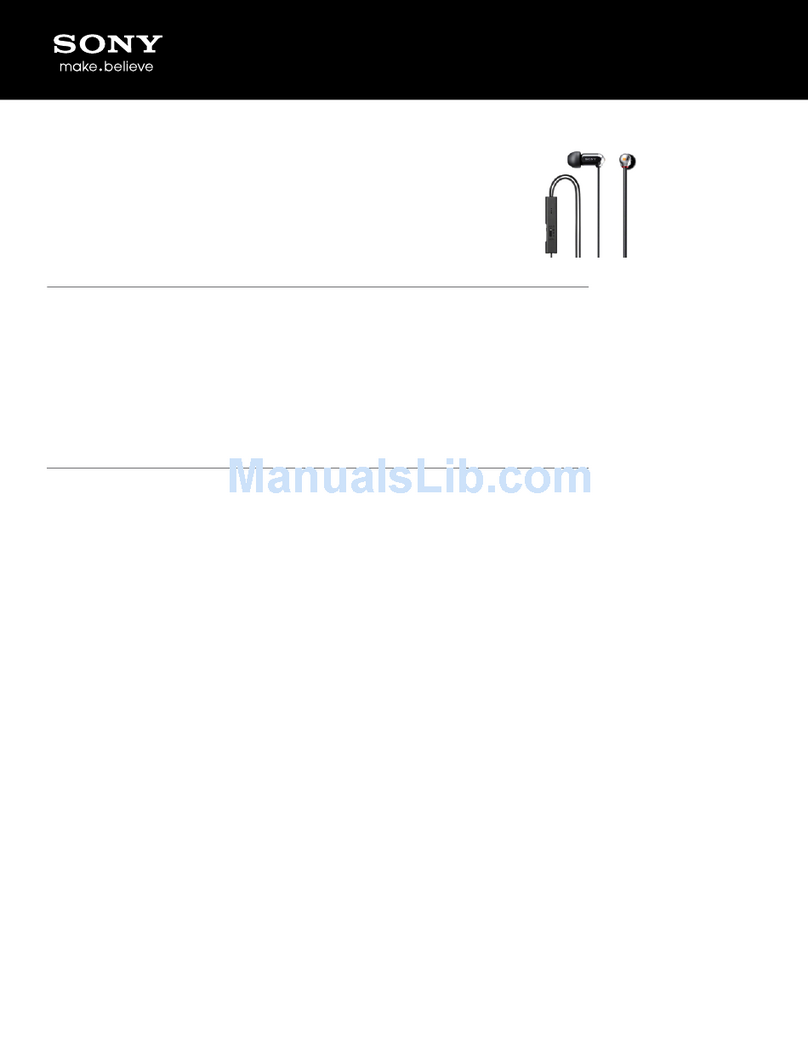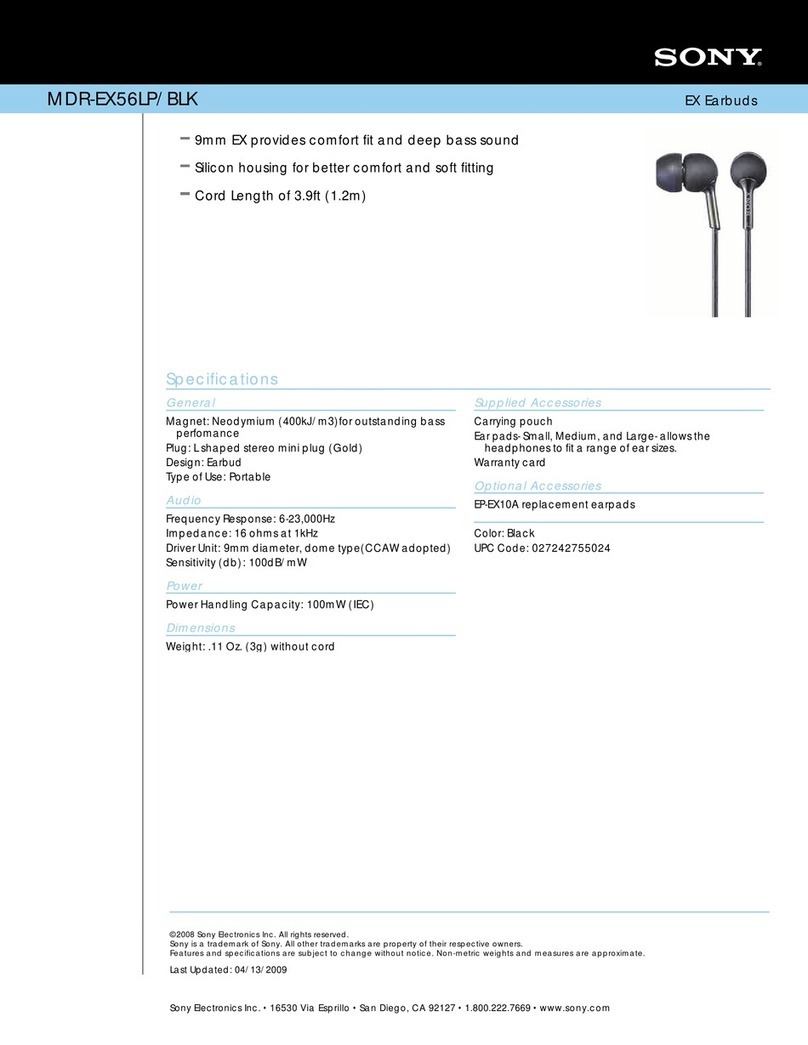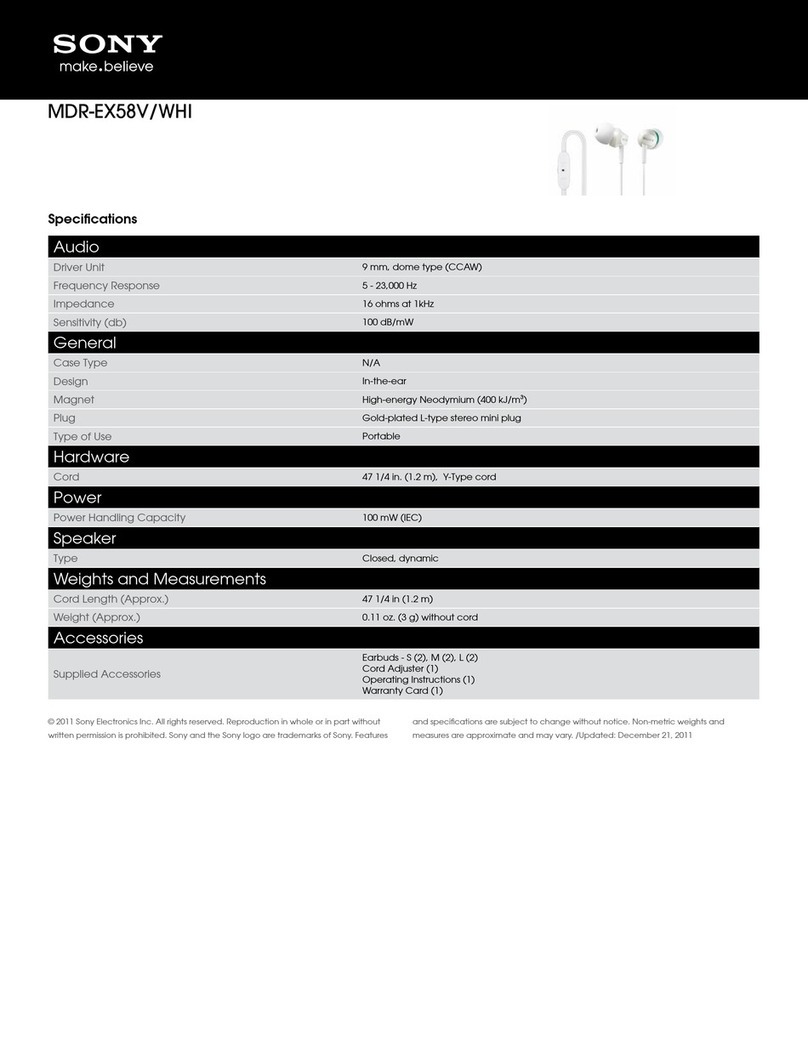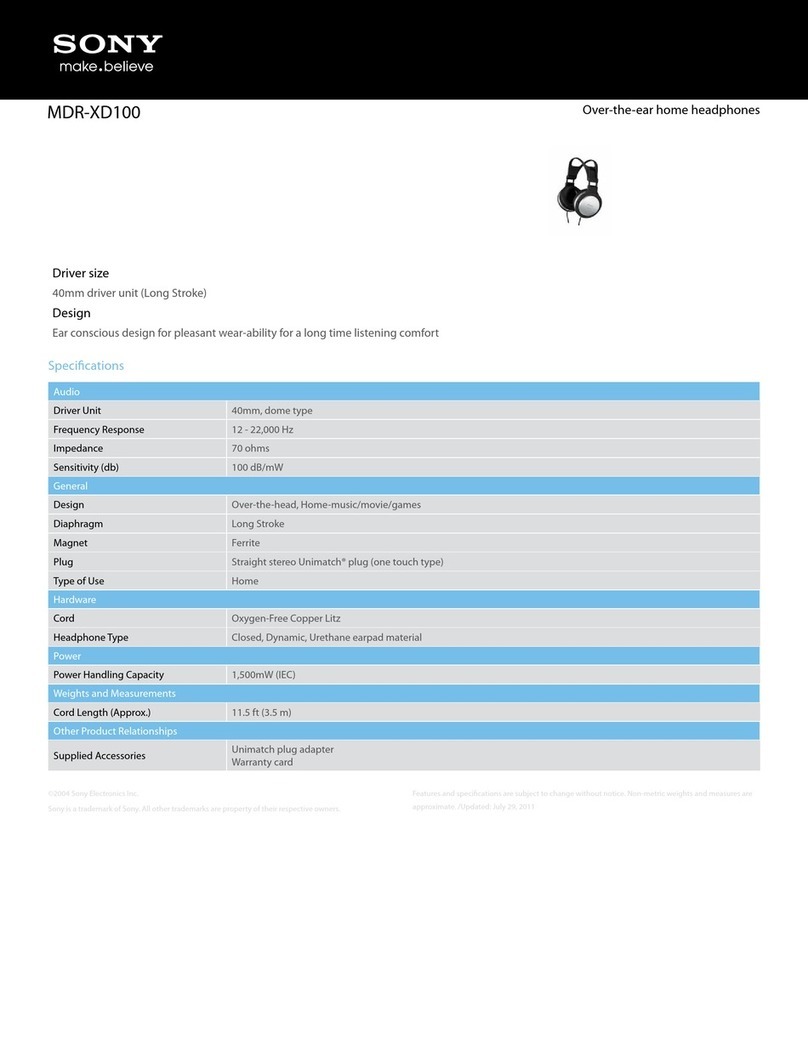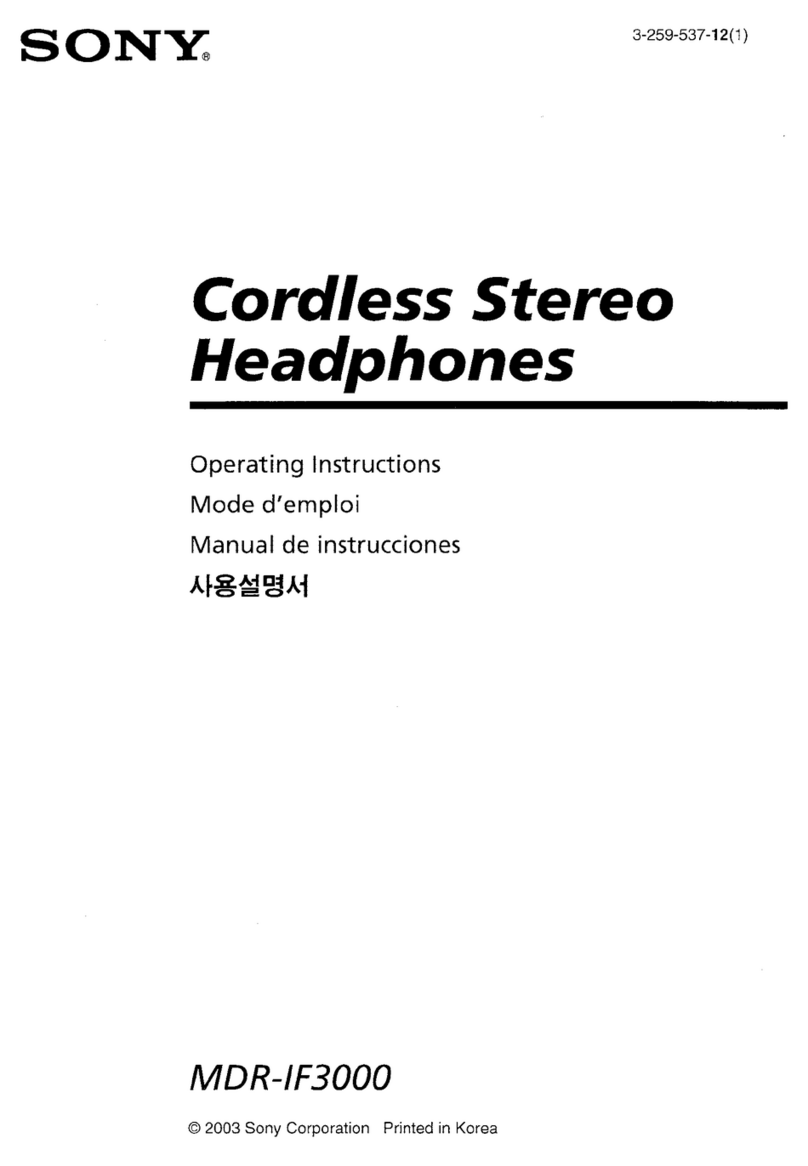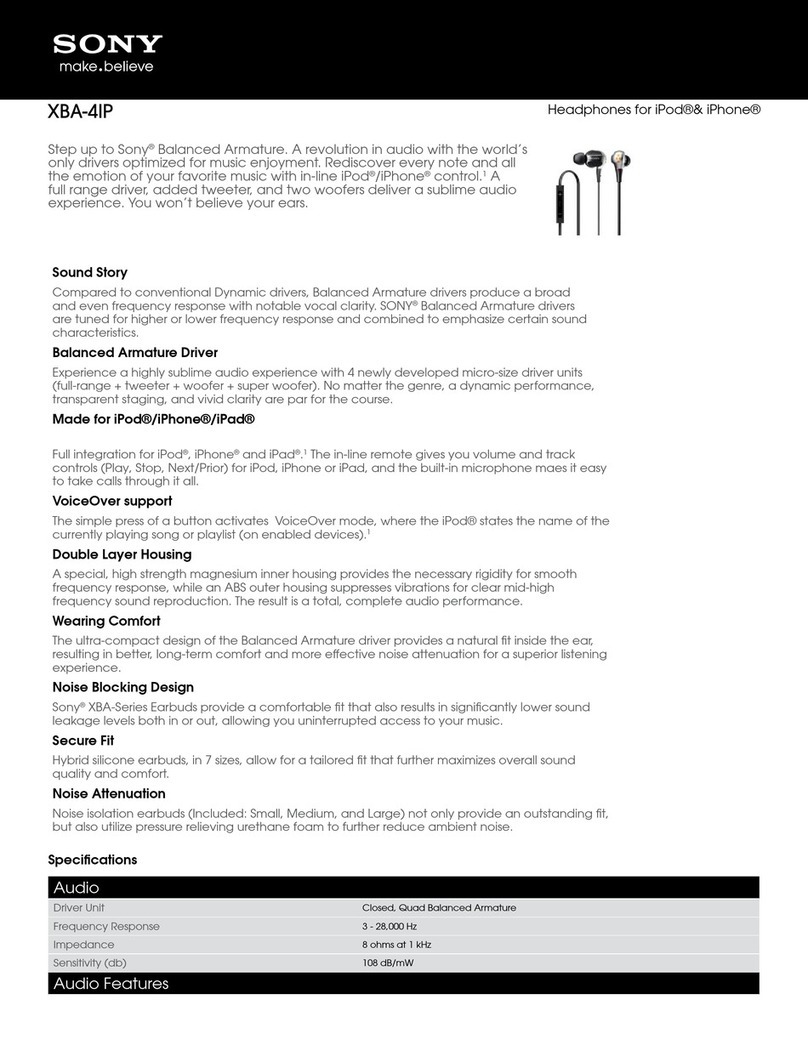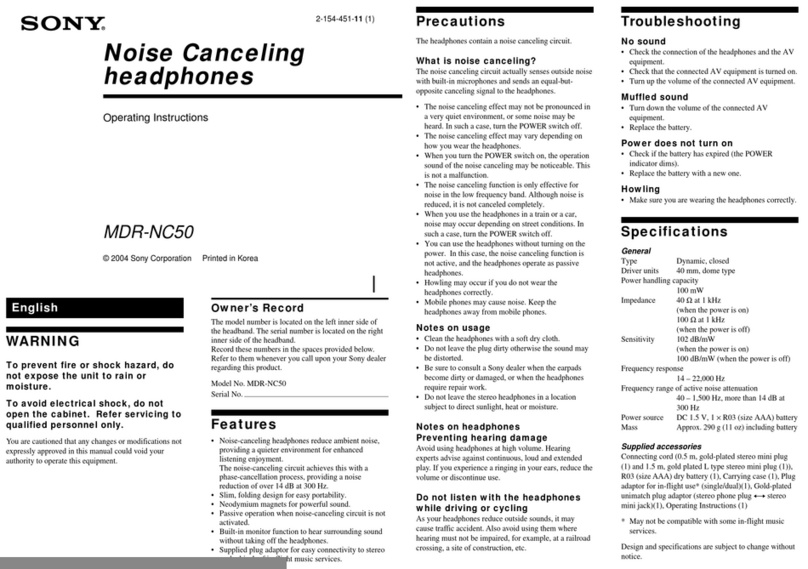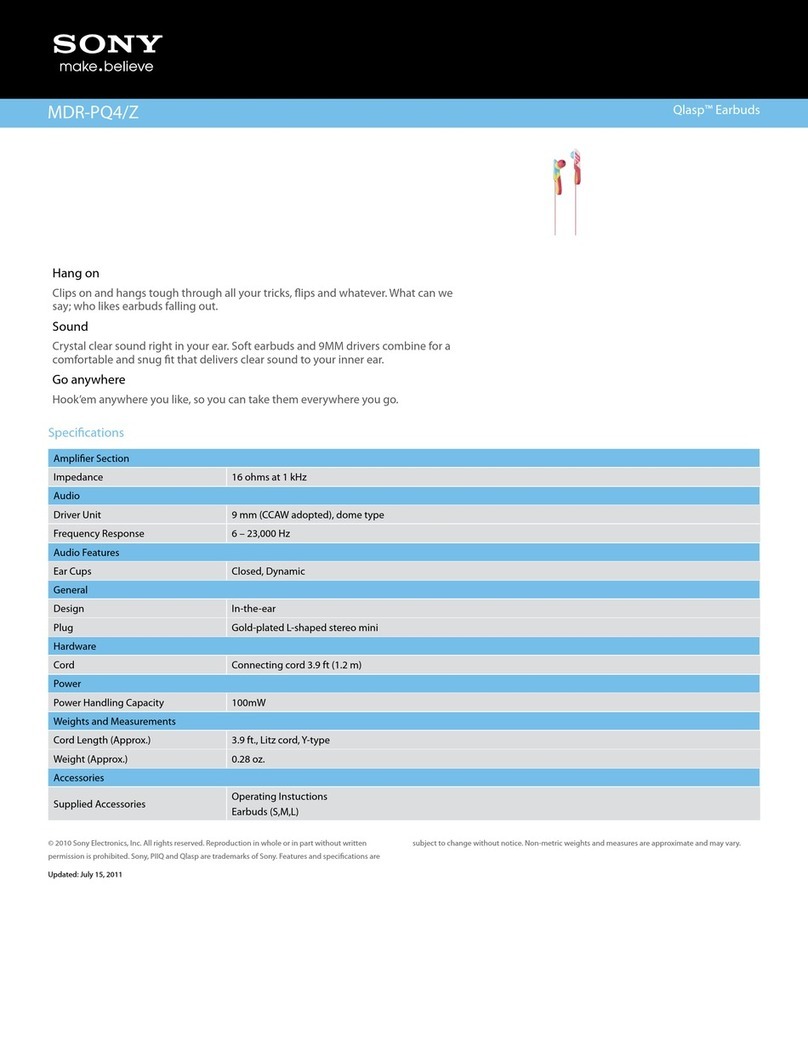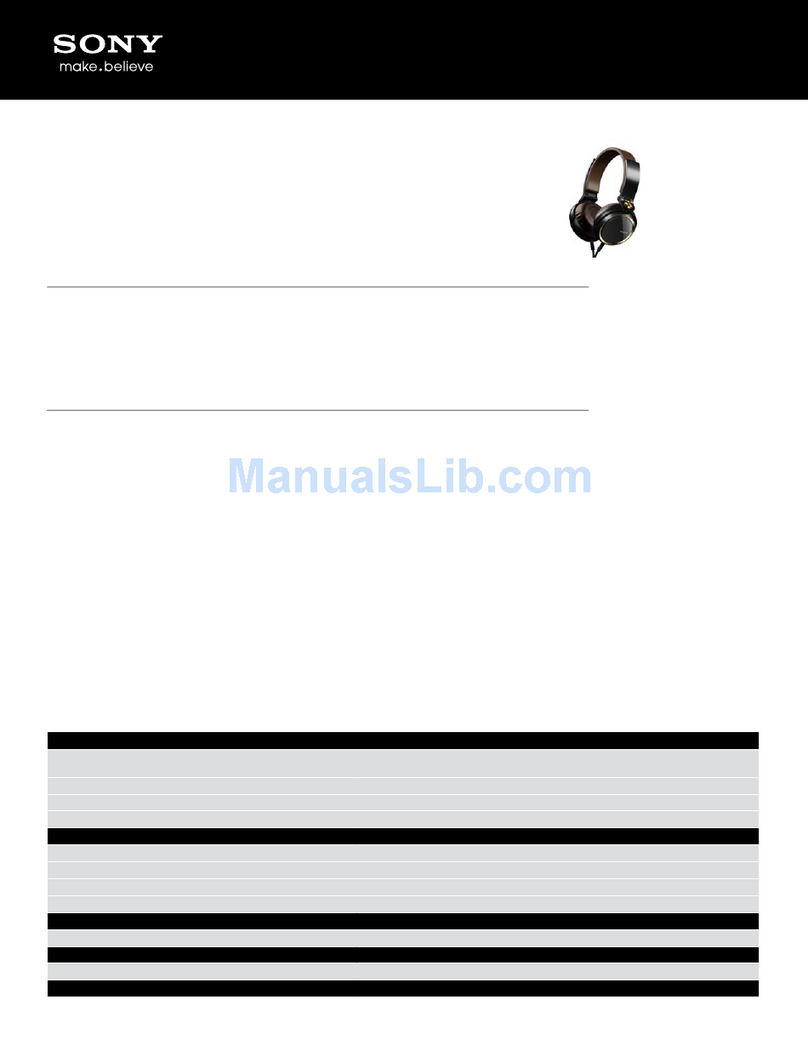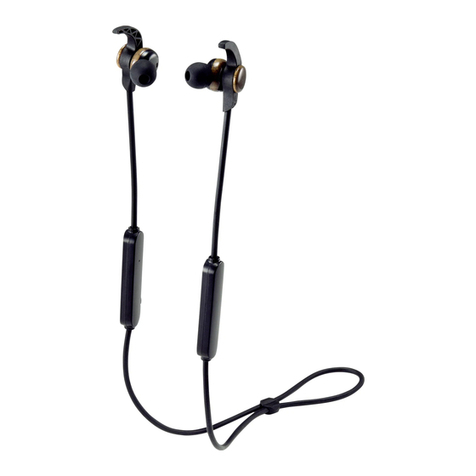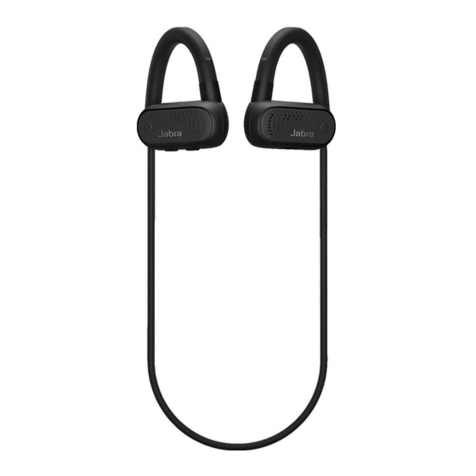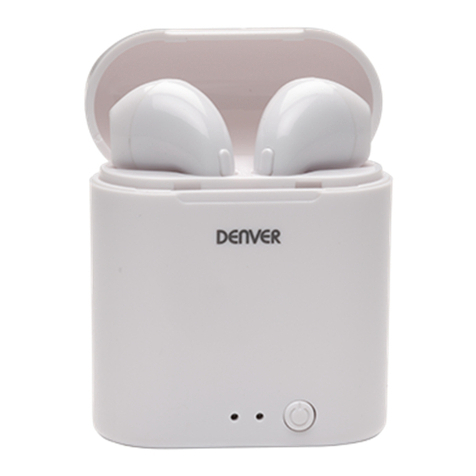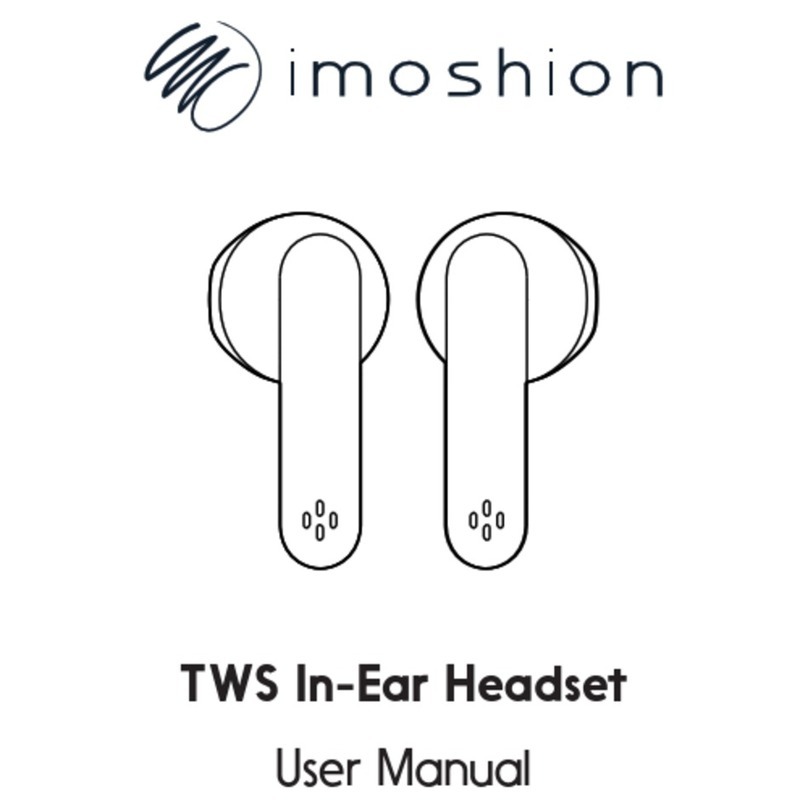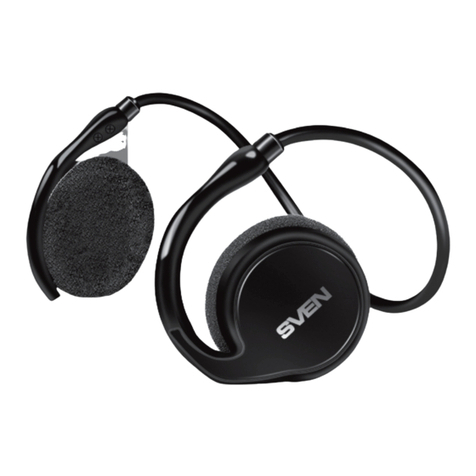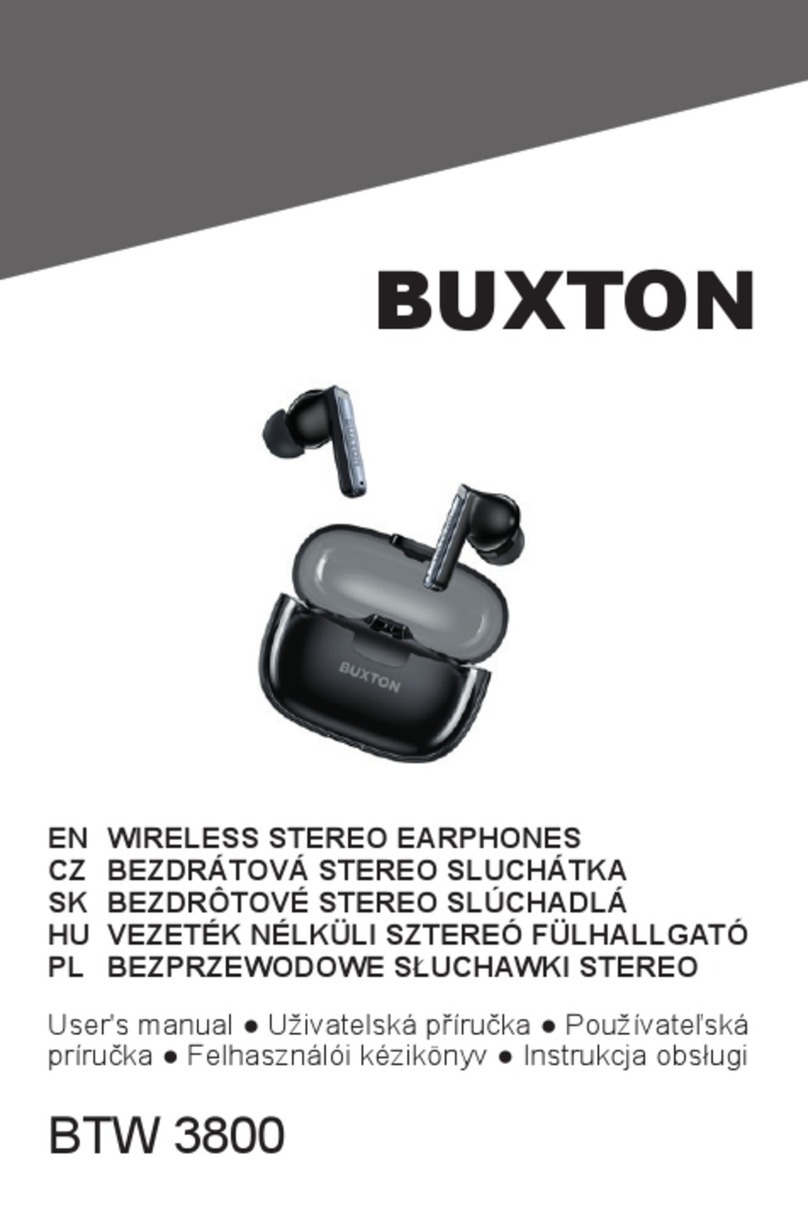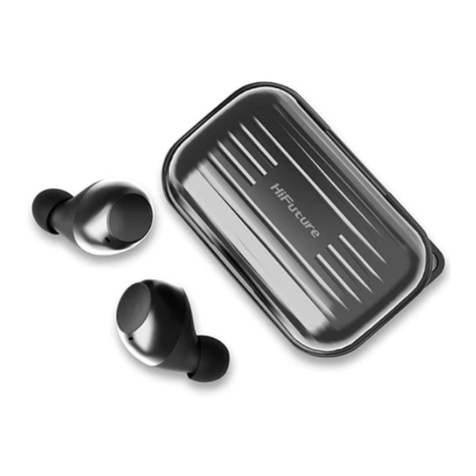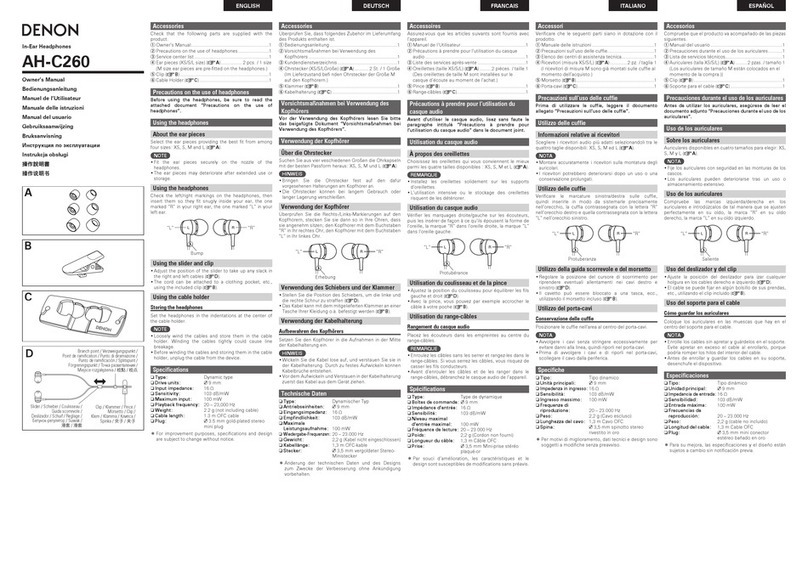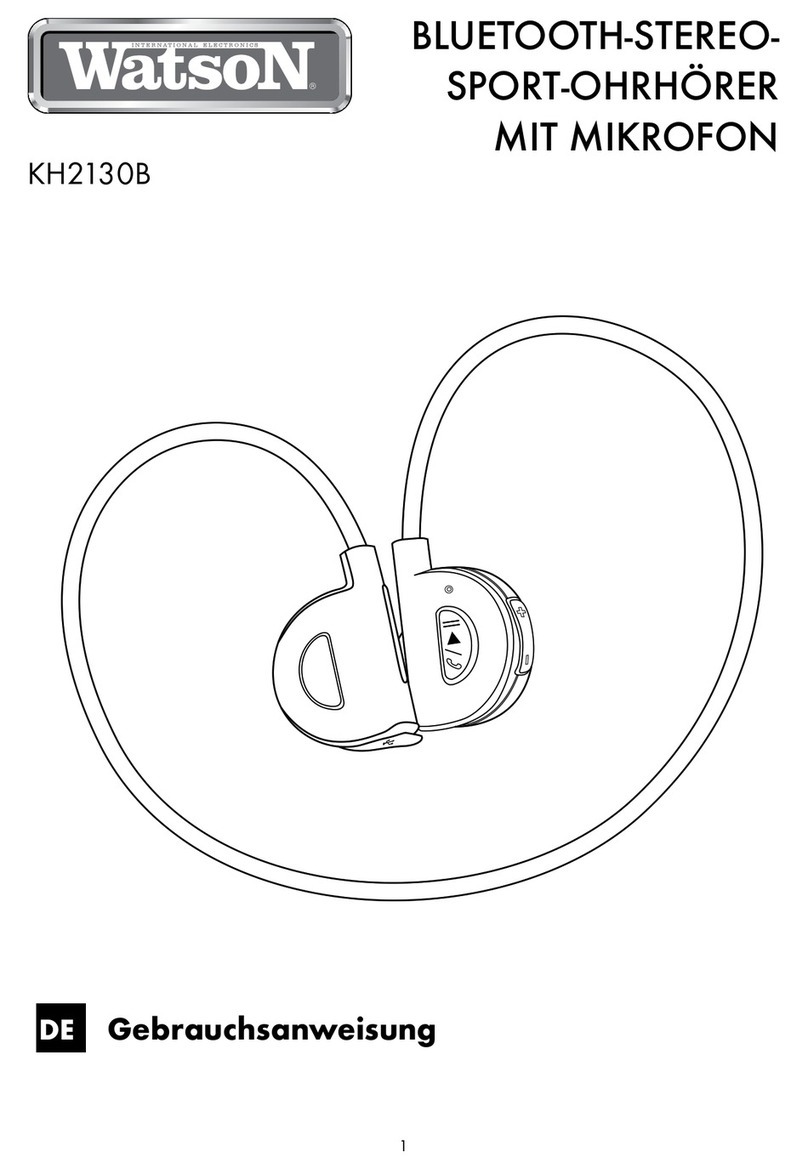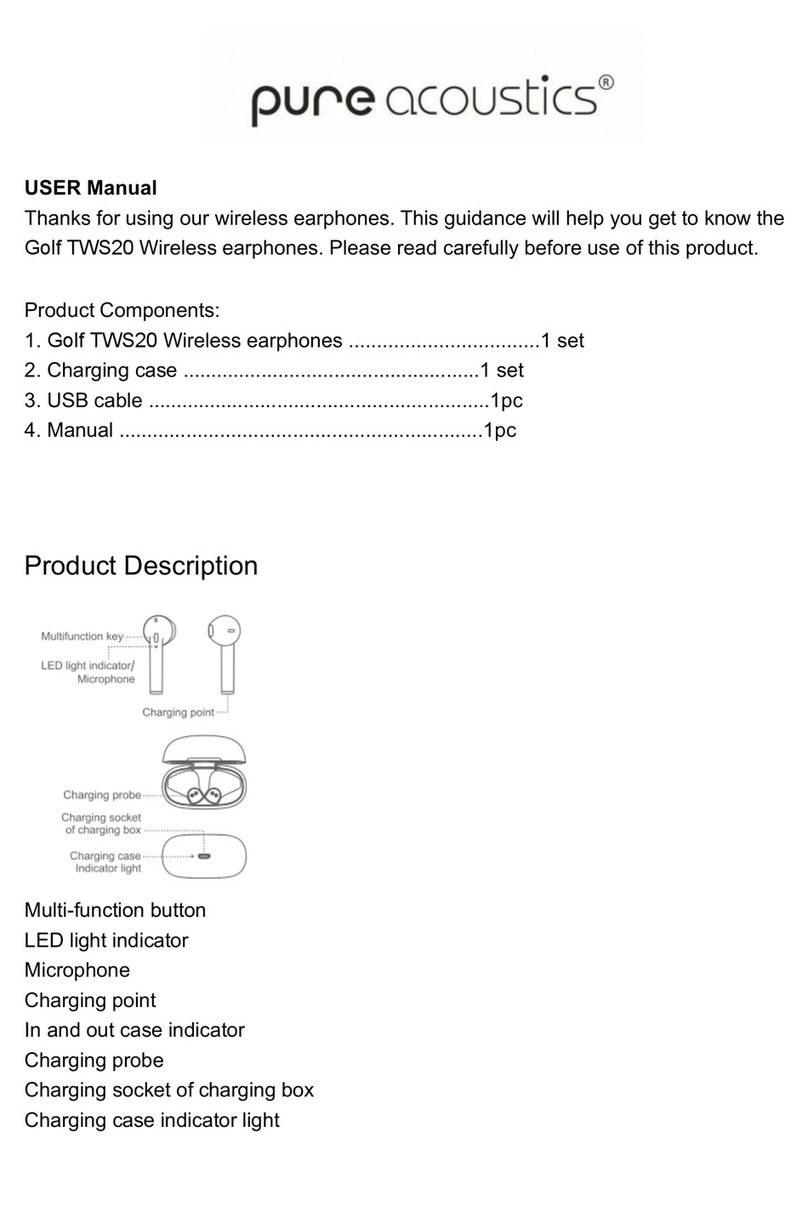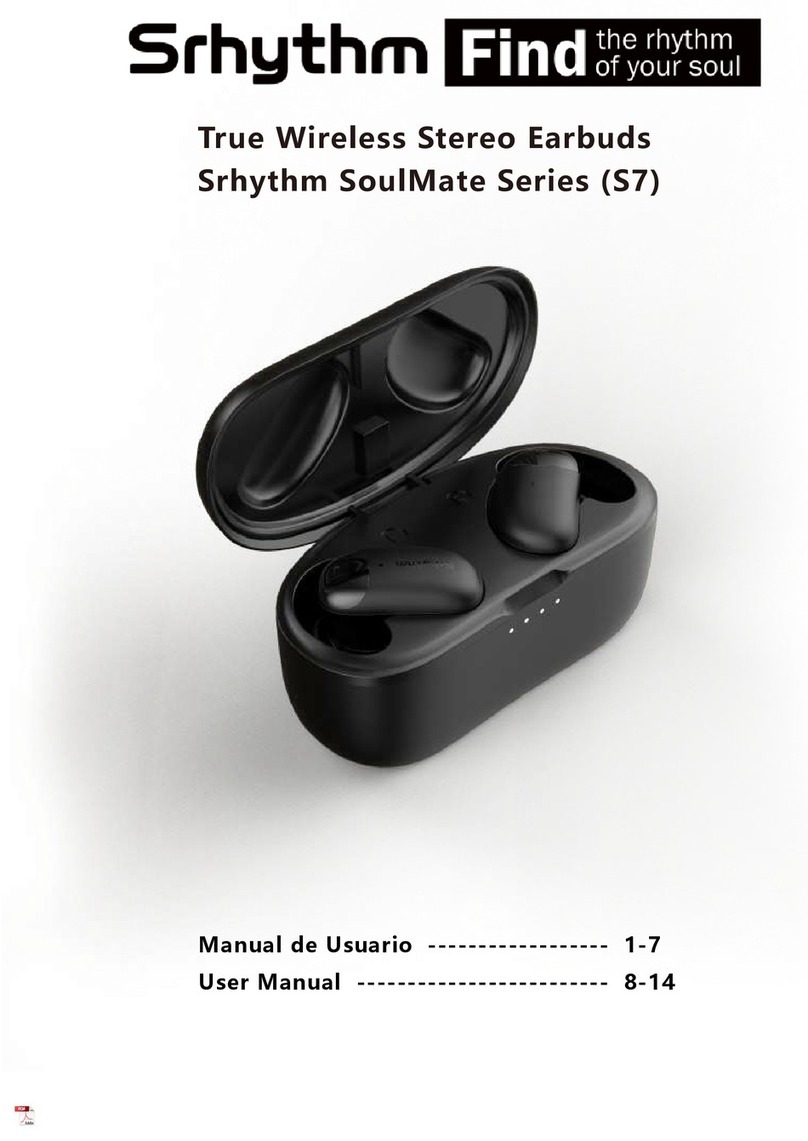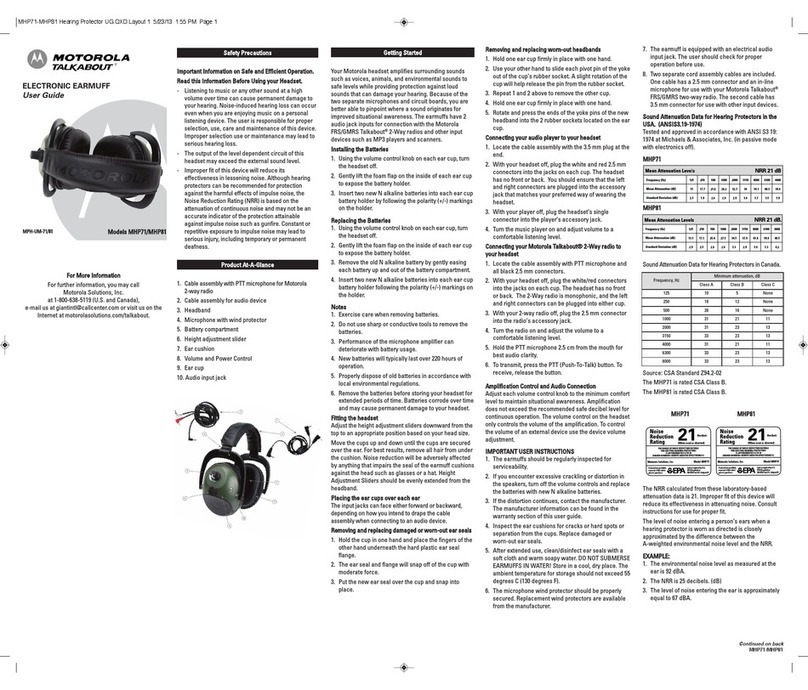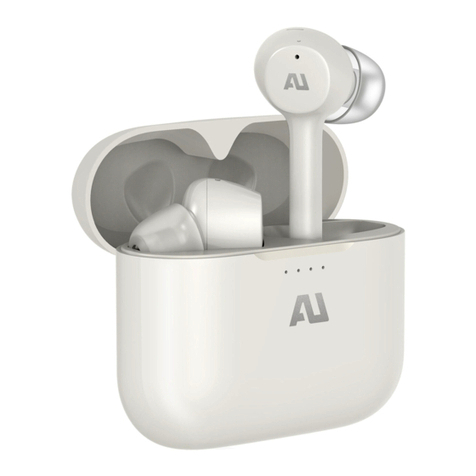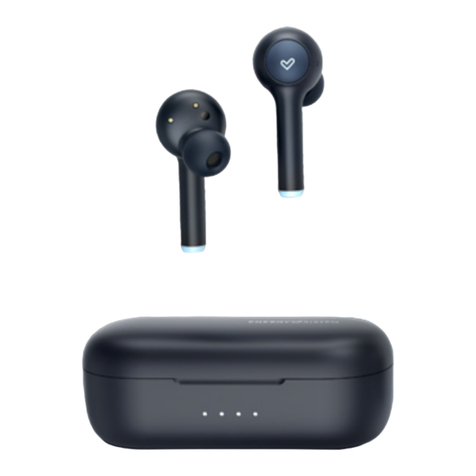2
MDR-IF3000
TABLE OF CONTENTS
1. GENERAL ............................................................................ 3
2. DISASSEMBLY
2-1. Front Plate (R) Assy ............................................................ 4
2-2. RX Board ............................................................................ 5
2-3. Hanger (R) ........................................................................... 5
2-4. Wiring on the Right Side ..................................................... 6
2-5. Front Plate (L) Assy ............................................................ 6
2-6. BATT Board ........................................................................ 7
2-7. Hanger (L) ........................................................................... 7
2-8. Wiring on the Left Side ....................................................... 8
2-9. Hanger Lid (L) .................................................................... 8
2-10. Wiring on the SW Board ..................................................... 9
2-11. How to Hang the Tension Spring ........................................ 9
3. ELECTRICAL ADJUSTMENTS
Tuning Adjustment ................................................................ 10
Mute ON Position Adjustment .............................................. 10
4. DIAGRAMS
4-1. Circuit Boards Location .................................................... 11
4-2. Printed Wiring Boards – Receiver Section – ..................... 12
4-3. Printed Wiring Boards – Power Section – ......................... 13
4-4. Schematic Diagram – Receiver Section – ......................... 14
4-5. IC Block Diagrams ............................................................ 15
5. EXPLODED VIEWS
5-1. Housing (L) Assy Section ................................................. 16
5-2. Housing (R) Assy Section ................................................. 17
6. ELECTRICAL PARTS LIST ......................................... 18
Notes on chip component replacement
•Never reuse a disconnected chip component.
•Notice that the minus side of a tantalum capacitor may be dam-
aged by heat.
rUNLEADED SOLDER
Boards requiring use of unleaded solder are printed with the lead-
free mark (LF) indicating the solder contains no lead.
(Caution: Some printed circuit boards may not come printed with
the lead free mark due to their particular size.)
: LEAD FREE MARK
Unleaded solder has the following characteristics.
•Unleaded solder melts at a temperature about 40°C higher than
ordinary solder.
Ordinary soldering irons can be used but the iron tip has to be
applied to the solder joint for a slightly longer time.
Soldering irons using a temperature regulator should be set to
about 350°C.
Caution: The printed pattern (copper foil) may peel away if
the heated tip is applied for too long, so be careful!
•Strong viscosity
Unleaded solder is more viscous (sticky, less prone to flow)
than ordinary solder so use caution not to let solder bridges
occur such as on IC pins, etc.
•Usable with ordinary solder
It is best to use only unleaded solder but unleaded solder may
also be added to ordinary solder.
r Repair DP-IF3000 with MDR-IF3000.



